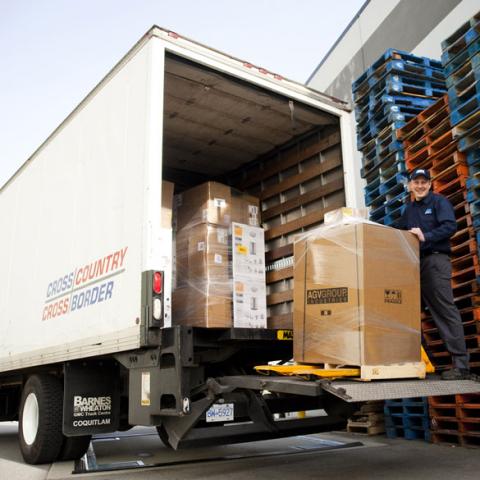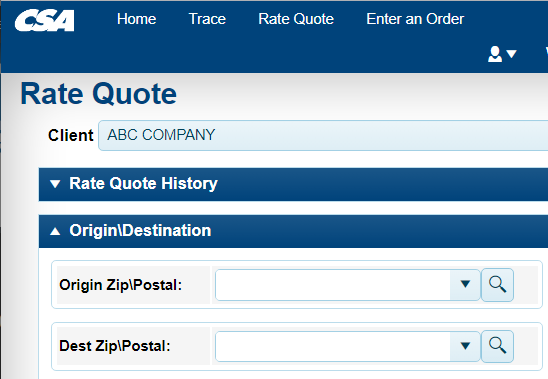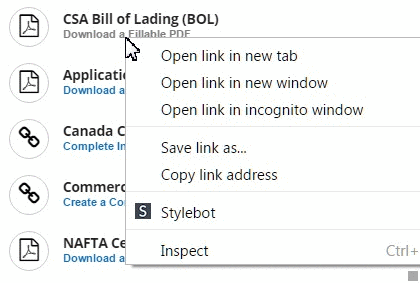Your Guide to Frequently Used Shipping Terms
Understanding shipping terms is crucial to every business that needs to transport goods locally and internationally.
Understanding shipping terms is crucial to every business that needs to transport goods locally and internationally.
If you ship large quantities of goods, or ship large or heavy goods that need to be protected during transfer and safely delivered then chances are you will use pallets at some point in the supply chain to do this. Using pallets makes shipping more secure and, more importantly, is the most cost effective way at maximizing space in truck trailers.
Shipping pallets of goods along the U.S. highway is usually done through LTL freight (less-than-truckload) or TL (full-load) carriers. For this, most common carriers use a freight class calculator to help set a precedent for what they may need to spend. Because space in a freight truck is limited, a freight class calculator is used to determine the value and difficulty of sending different types of products.
One of the most critical elements of shipping goods is understanding the various weights involved in the industry. Weight is an essential aspect of determining the price of a shipment, regardless of the transportation method. Knowing what tare weight is will help your company understand Bill of Lading documents and how shipping costs were calculated.
Every freight transaction involves multiple parties but the two most often confused terms are the: consignee and consignor. Whether you are a consignor or consignee, the freight shipping process and associated terminologies can be perplexing. In order to ensure nothing goes wrong, it’s important to not only understand the freight process but also the roles and responsibilities of each party.

Cross Border, Canada, US
Daily Pickups & Departures
99.8% No-Damage Delivery
Simplified Pallet Pricing
Learn more about Shipping to Canada from USA
No Voicemail During Open Hours
250+ Transportation Professionals
In-House Customs Coordinators
Fast & Accurate Freight Quotes
Get a Freight Shipping Quote

High volumes = competitive rates
2 Terminals for Full Coverage
50,000 sq ft LA Shipping Facility
Overseas shipping via the LA Port
Learn about Canada-California Freight Shipping

Linking Canada & Northeastern US
US Domestic: NY to/from California
Same Day Pickups
15 Terminal Network
Find Shipping Companies in New York

Instant Rates: Get quotes for 90% of postal/zips in seconds.
Book Online: Convert quotes into pickup requests easily.
Manage Shipments: Trace orders and download BOLs and PODs.
Shipment History: Export to Excel. Access saved addresses.
Online LTL Pallet Rates
We have just completed a major expansion in Toronto that has doubled the size of our high-speed LTL terminal. Located on 5 acres, this facility with 25 loading doors significantly enhances transit times across the CSA Network. Learn more
CSA ONLINE: Access our tariff and get highly competitive pallet rates for 90% of all postal/ZIP codes in Canada/USA serviced directly through our network. Instant freight quotes, order booking, document access and shipment tracking. Learn More
Nous nous excusons la traductions en françaises sera bientôt disponible.
The documents here are mostly PDF forms for download. If you are looking for POD's or other scanned documents related to your shipment please request access to CSA's online portal here.
For best results with the PDF forms in the downloads tab please first save the file and then open it with the latest version of Adobe Reader.
These files have been designed as fillable forms where data can be entered and, if necessary partially completed and saved, to reuse later on a similar shipment. For example if you have regular orders between the same locations you can download a Bill of Lading and save it with all the required location information.
To take advantage of this functionality please right click the blue "download" text and save the file to your computer.

Note: If you are attempting to view any of these documents in your browser's PDF viewer (by clicking on them directly), you may not be able to make use the fillable form fields and the save functionality. Check if your browser supports the adobe plugin here and follow the steps to add the adobe plugin to your browser. If you can't get the in-browser forms to work just right click and download the PDF and open with Adobe Reader.
Please contact us if you have additional questions or feedback.